Leonardo Torres
Optimizing Graph Structure for Targeted Diffusion
Aug 12, 2020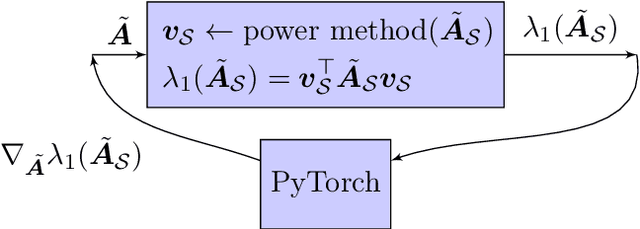
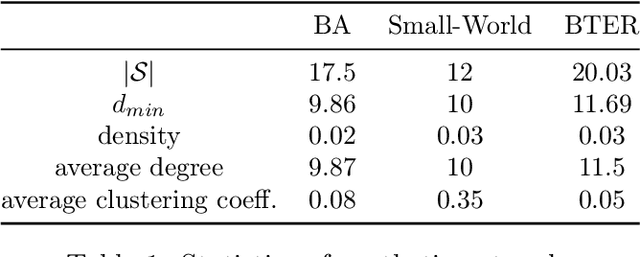
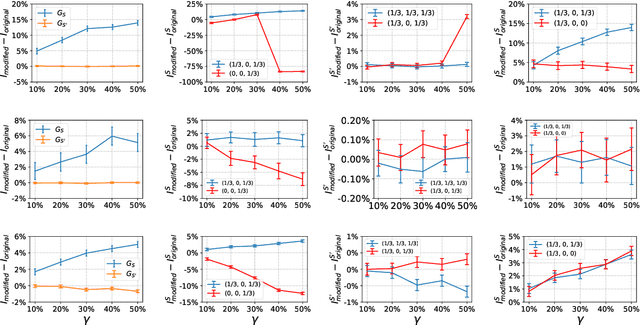
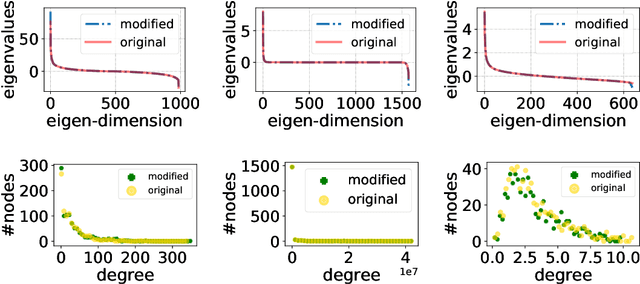
Abstract:The problem of diffusion control on networks has been extensively studied, with applications ranging from marketing to cybersecurity. However, in many applications, such as targeted vulnerability assessment or clinical therapies, one aspires to affect a targeted subset of a network, while limiting the impact on the rest. We present a novel model in which the principal aim is to optimize graph structure to affect such targeted diffusion. We present an algorithmic approach for solving this problem at scale, using a gradient-based approach that leverages Rayleigh quotients and pseudospectrum theory. In addition, we present a condition for certifying a targeted subgraph as immune to targeted diffusion. Finally, we demonstrate the effectiveness of our approach through extensive experiments on real and synthetic networks.
A New Algorithm of Speckle Filtering using Stochastic Distances
Aug 29, 2013

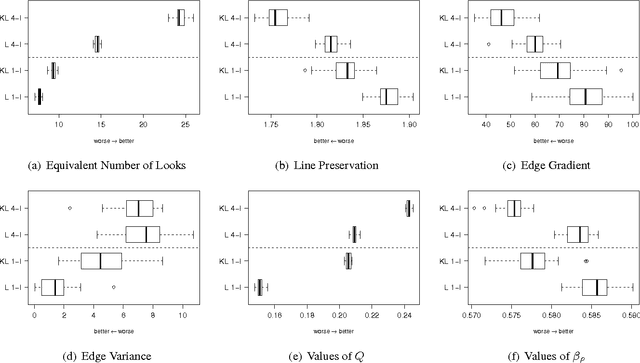
Abstract:This paper presents a new approach for filter design based on stochastic distances and tests between distributions. A window is defined around each pixel, overlapping samples are compared and only those which pass a goodness-of-fit test are used to compute the filtered value. The technique is applied to intensity SAR data with homogeneous regions using the Gamma model. The proposal is compared with the Lee's filter using a protocol based on Monte Carlo. Among the criteria used to quantify the quality of filters, we employ the equivalent number of looks, line and edge preservation. Moreover, we also assessed the filters by the Universal Image Quality Index and the Pearson's correlation on edges regions.
SAR Image Despeckling Algorithms using Stochastic Distances and Nonlocal Means
Aug 20, 2013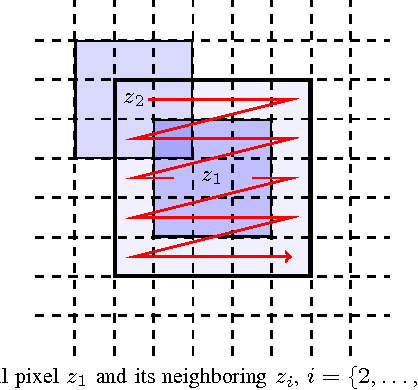
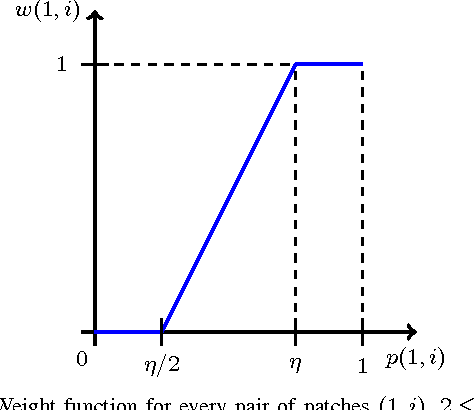
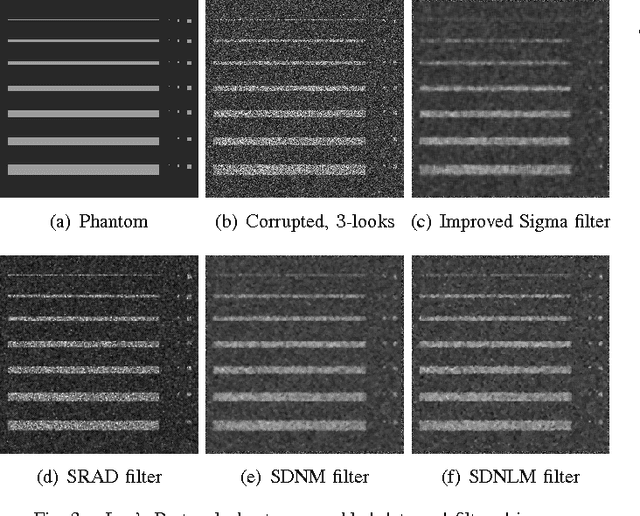
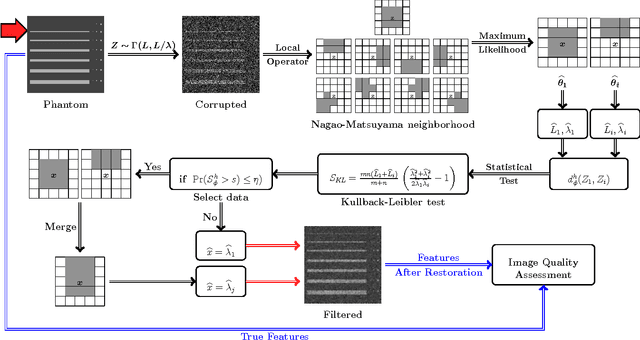
Abstract:This paper presents two approaches for filter design based on stochastic distances for intensity speckle reduction. A window is defined around each pixel, overlapping samples are compared and only those which pass a goodness-of-fit test are used to compute the filtered value. The tests stem from stochastic divergences within the Information Theory framework. The technique is applied to intensity Synthetic Aperture Radar (SAR) data with homogeneous regions using the Gamma model. The first approach uses a Nagao-Matsuyama-type procedure for setting the overlapping samples, and the second uses the nonlocal method. The proposals are compared with the Improved Sigma filter and with anisotropic diffusion for speckled data (SRAD) using a protocol based on Monte Carlo simulation. Among the criteria used to quantify the quality of filters, we employ the equivalent number of looks, and line and edge preservation. Moreover, we also assessed the filters by the Universal Image Quality Index and by the Pearson correlation between edges. Applications to real images are also discussed. The proposed methods show good results.
Speckle Reduction in Polarimetric SAR Imagery with Stochastic Distances and Nonlocal Means
Apr 16, 2013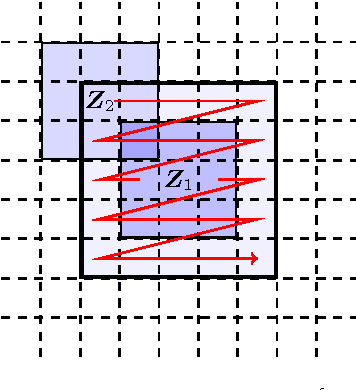
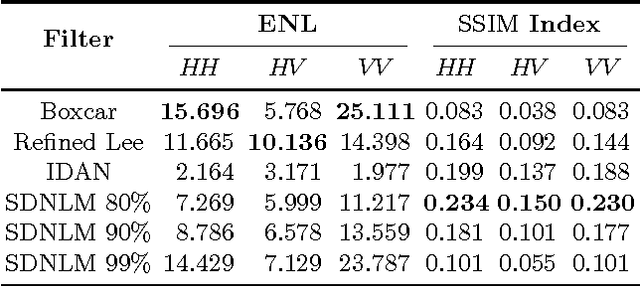
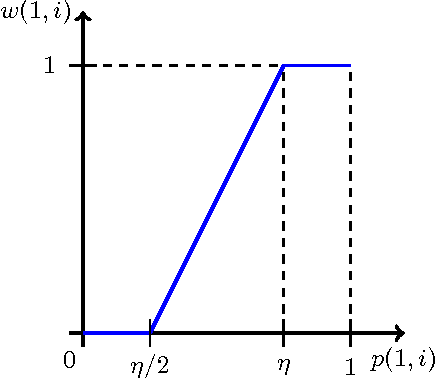
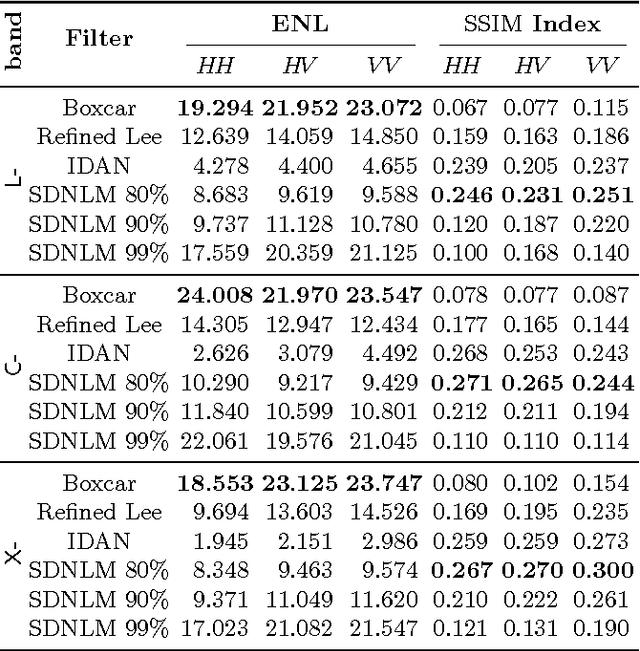
Abstract:This paper presents a technique for reducing speckle in Polarimetric Synthetic Aperture Radar (PolSAR) imagery using Nonlocal Means and a statistical test based on stochastic divergences. The main objective is to select homogeneous pixels in the filtering area through statistical tests between distributions. This proposal uses the complex Wishart model to describe PolSAR data, but the technique can be extended to other models. The weights of the location-variant linear filter are function of the p-values of tests which verify the hypothesis that two samples come from the same distribution and, therefore, can be used to compute a local mean. The test stems from the family of (h-phi) divergences which originated in Information Theory. This novel technique was compared with the Boxcar, Refined Lee and IDAN filters. Image quality assessment methods on simulated and real data are employed to validate the performance of this approach. We show that the proposed filter also enhances the polarimetric entropy and preserves the scattering information of the targets.
Polarimetric SAR Image Smoothing with Stochastic Distances
Jul 03, 2012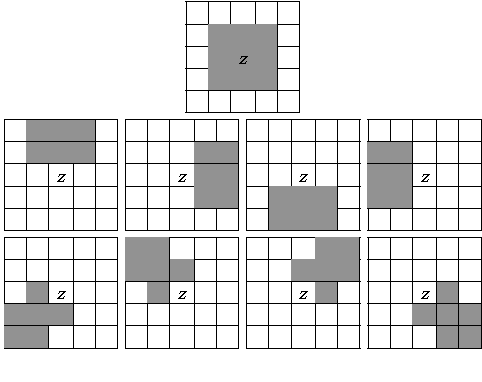


Abstract:Polarimetric Synthetic Aperture Radar (PolSAR) images are establishing as an important source of information in remote sensing applications. The most complete format this type of imaging produces consists of complex-valued Hermitian matrices in every image coordinate and, as such, their visualization is challenging. They also suffer from speckle noise which reduces the signal-to-noise ratio. Smoothing techniques have been proposed in the literature aiming at preserving different features and, analogously, projections from the cone of Hermitian positive matrices to different color representation spaces are used for enhancing certain characteristics. In this work we propose the use of stochastic distances between models that describe this type of data in a Nagao-Matsuyama-type of smoothing technique. The resulting images are shown to present good visualization properties (noise reduction with preservation of fine details) in all the considered visualization spaces.
Speckle Reduction using Stochastic Distances
Jul 03, 2012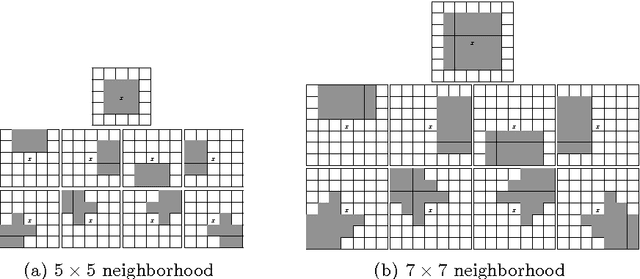


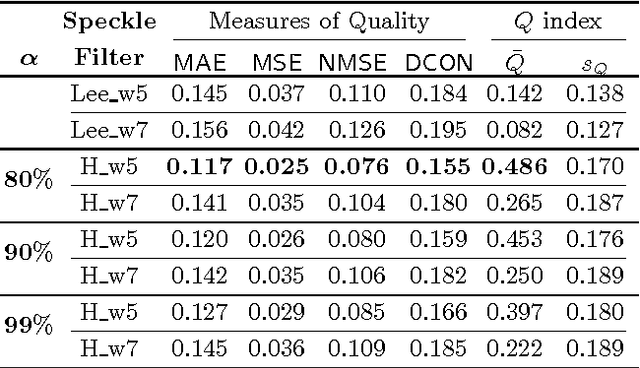
Abstract:This paper presents a new approach for filter design based on stochastic distances and tests between distributions. A window is defined around each pixel, samples are compared and only those which pass a goodness-of-fit test are used to compute the filtered value. The technique is applied to intensity Synthetic Aperture Radar (SAR) data, using the Gamma model with varying number of looks allowing, thus, changes in heterogeneity. Modified Nagao-Matsuyama windows are used to define the samples. The proposal is compared with the Lee's filter which is considered a standard, using a protocol based on simulation. Among the criteria used to quantify the quality of filters, we employ the equivalent number of looks (related to the signal-to-noise ratio), line contrast, and edge preservation. Moreover, we also assessed the filters by the Universal Image Quality Index and the Pearson's correlation between edges.
 Add to Chrome
Add to Chrome Add to Firefox
Add to Firefox Add to Edge
Add to Edge